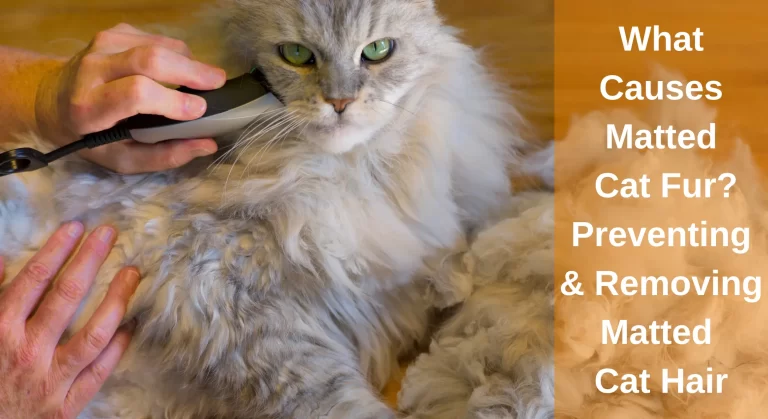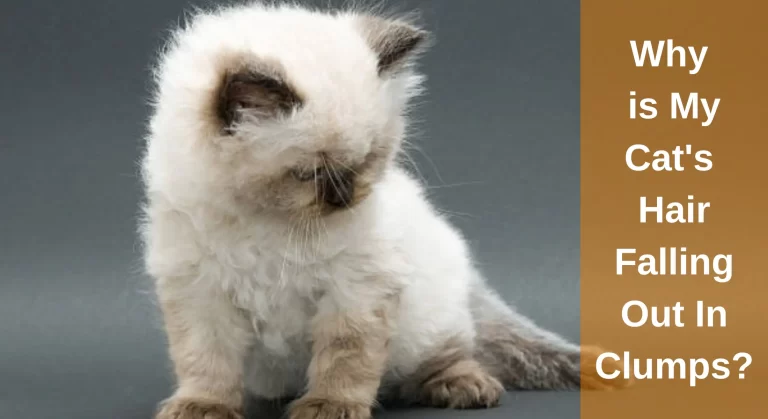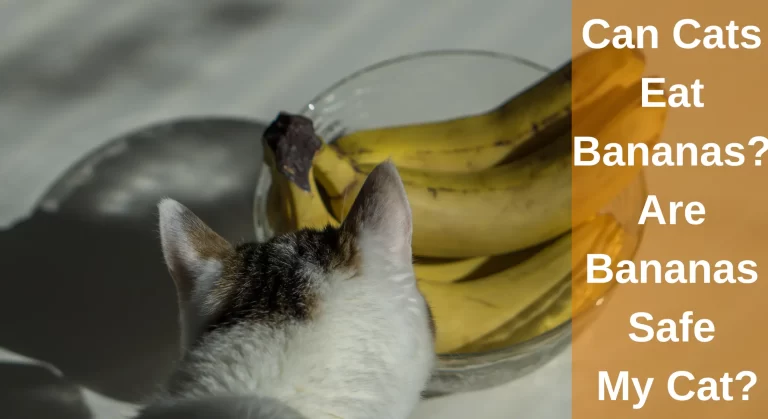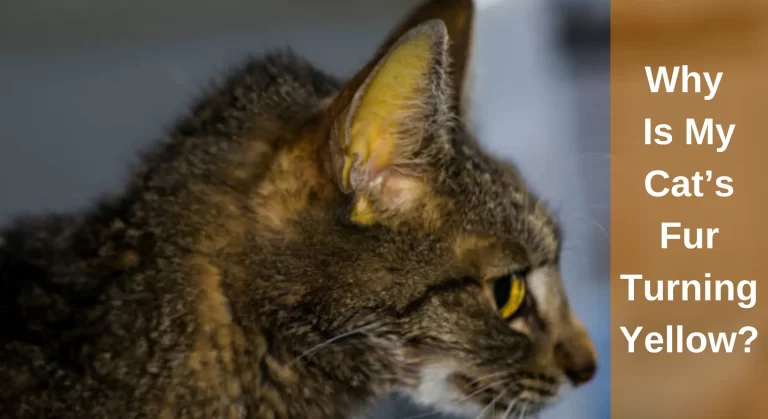Can Cats Eat Aloe Plant? How To Keep Cats Away From It?
Aloe Vera is a common houseplant grown for its therapeutic benefits rather than its appearance. Despite having a reputation for being a healing plant for humans, aloe vera is a mildly to highly harmful herb for cats. Aloe juice and pulp are exceedingly dangerous to cats, even though they may be used to cure a variety of human problems. Can cats eat aloe plants?
Aloe plants are not edible by cats. Cats who consume aloe may vomit, feel sleepy, or develop diarrhoea. Even though your cat might not pass away, consuming aloe vera is very bad for your cat’s health. Make sure aloe plants are away from cats and contact your veterinarian if you suspect your cat consumes any parts of an aloe plant.
The aim of this article is to explain more about how aloe is dangerous to your feline buddy, What harm aloe possesses to the cat, how aloe plants can be toxic, how you can prevent your cat from getting poisoned by aloe, and what to do if your cat does get poisoned.
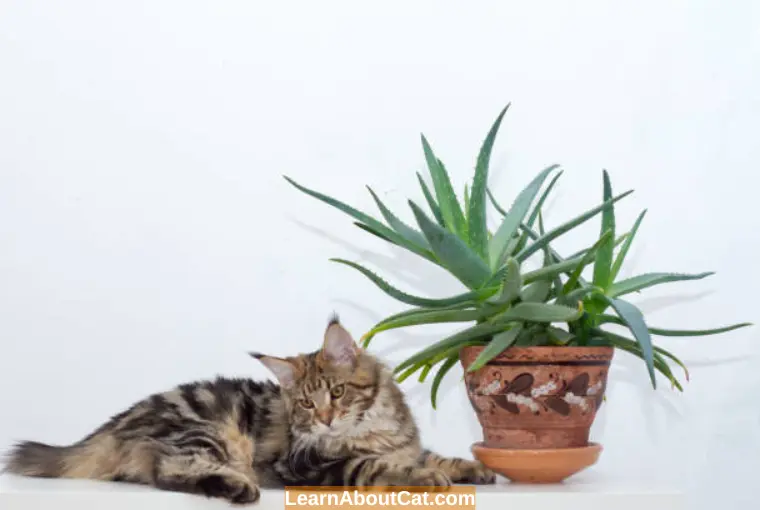
Are Aloe Plants Safe for Cats? Is Aloe Vera Plant Toxic To Cats?
One benefit is that your cat won’t experience any skin sensitivity or pain if it brushes past the plant. Problems only occur when they consume the latex contained in the leaves. Aloe vera is thus less hazardous than some other houseplants, which your cat may damage by merely brushing through the leaves.
However, the plant becomes far more lethal when consumed. As previously indicated, ingestion of the plant’s latex has purgative properties and can give your cat diarrhoea and discomfort.
The amount of the plant consumed affects how bad the diarrhoea will be. The body will quickly process small amounts of latex, and only mild symptoms of illness and discomfort will result. Aloe vera can be fatal if consumed in high amounts, though. Dehydration can result from severe diarrhoea in your cat. To restore the fluid and electrolyte balance in their cells, individuals may require intravenous fluids; else, they risk not living.
Additionally, while aloe vera gel is safe for humans to ingest, aloe latex can have the same negative effects on people as it does on cats, including diarrhoea and stomach pains.
According to studies, repeated use of entire aloe leaves has also been linked to an increased risk of human cancer and renal impairment. The plant may not be as harmless as we first thought.
Having stated that, for these potentially fatal consequences to manifest, a significant amount of aloe latex must be swallowed. Because the plant doesn’t taste especially good, it is quite unlikely that your cat would consume enough of it to pose a threat to its life. Nevertheless, it’s better to either use a cat-friendly alternative or keep your aloe vera plant out of your cat’s reach.
Can Aloe Vera Cause Death in Cats?
Even though your cat might not pass away, consuming aloe vera is very bad for your cat’s health. Cats are said to benefit from aloe latex as a purgative. An animal may have some gastrointestinal pain if it eats a lot of plants that are unpleasant to eat. It might be fatal to have severe diarrhoea since it can induce dehydration.
When cats consume too much aloe vera, they may have nausea, diarrhoea, fatigue, depression, anorexia, tremors, and a change in the colour of their urine. If you observe them in your cat, call your veterinarian.
Also Read: Are Snake Plants Toxic to Cats?
How Will An Aloe Plant React When A Cat Eats It? Signs And Symptoms
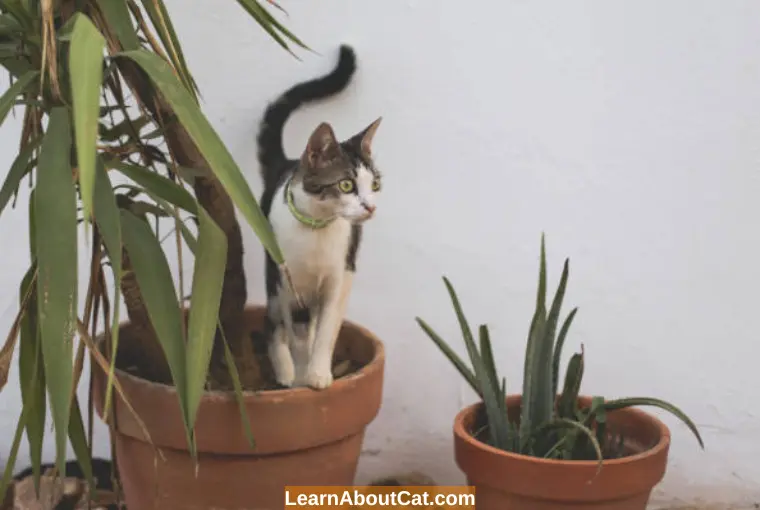
Awareness of the warning signs and symptoms is crucial since cat aloe vera poisoning may be rather severe. By doing this, you can provide your cat with the treatment they require as quickly as possible, reducing the likelihood that the problem will become life-threatening
After eating Aloe vera, the following signs a feline buddy may show:
- Abdominal cramps
- Nausea and diarrhoea
- Urine changes in colour (urine becomes red)
- Hunger loss
- Depression
- Lethargy
Why Does Aloe Vera Harm Cats?
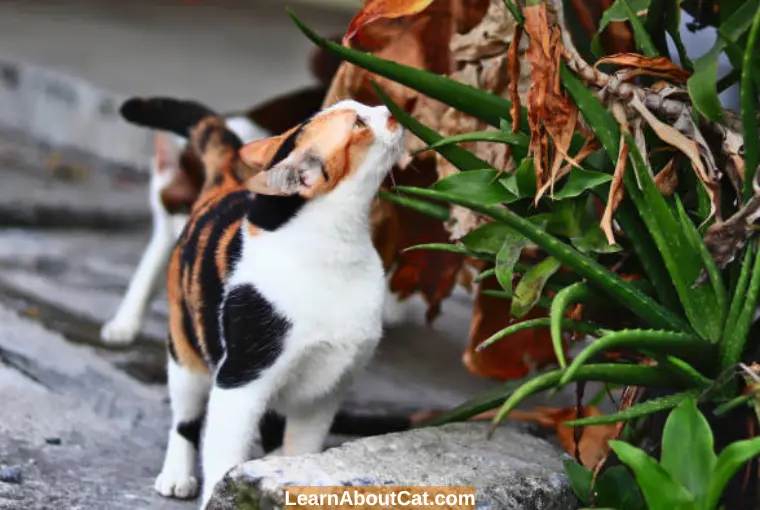
Many individuals find this unexpected since, as humans, we view aloe vera as a therapeutic plant with several health benefits—not hazards! The white sap that surrounds the leaf’s very edge and the aloe vera gel, which appears as a green gooey material in the centre, should both be visible within.
Glycosides, anthracene, and anthraquinones, which are all classified as saponins, are abundant in latex. Saponins are purgative compounds, which means they make the colon produce more water and mucus, which causes diarrhoea.
Aloe vera leaves, on the other hand, contain a non-toxic gel. This explains why we believe the plant to be useful and is the portion of the plant that is included in the aloe vera beverages and skin care products that we use. Although the aloe vera plant has numerous unpleasant side effects, the gel may be extracted and used.
Aloe Vera Gel – Can Cats Eat It?
Aloe vera gel is safe for cats. Because of its rich vitamin, mineral, and antioxidant content, it helps to keep their skin and fur moisturised and hastens the healing of any open wounds.
After you’ve delivered the treatment, your cat can continue licking their fur because there are no adverse effects from ingesting aloe vera gel. Your cat won’t get sick if she consumes a small amount of aloe vera gel.
What Should I Do To Stop My Cat Eating Aloe Plants?
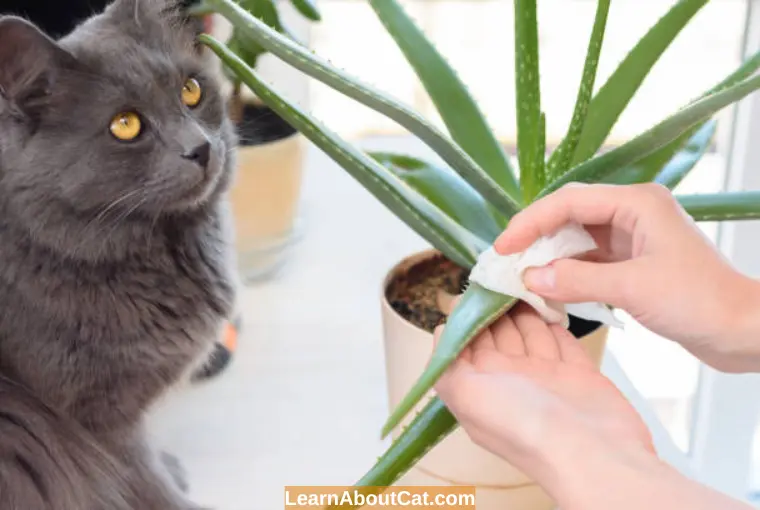
You may still have somewhat hazardous houseplants if you have cats unless they are harmful to them, such as lilies, which you should avoid at all costs. You merely need to take additional care to prevent your cat from nibbling on the leaves if you want to retain these plants. Use the following one or combine several for a more potent remedy!
1. Plants Should Be Kitty-Free Areas
Cats are great climbers and can get into all kinds of bizarre situations. Houseplants may be quite difficult to keep out of reach because of this. Your cat would probably figure out a way to climb up there even if you put your aloe plant on the top shelf in your house! The implementation of cat-free areas, therefore, offers a practical remedy.
Use a room in your home, such as the bedroom, that is kept off-limits to cats to store your aloe vera plant or other minimally hazardous houseplants. This guarantees that they are kept securely away from our cats’ curious paws. Keeping plants in your bedroom provides additional benefits for you because many plants clean the air in the space they are in.
2. Employ Hanging Planters
Don’t you have a room in your home that is cat-free? No issue! Instead, why not utilise hanging planters? In addition to being a practical technique to prevent your cat from destroying your houseplant, hanging planters are currently quite in style. Although these plants are not usually hung in hanging baskets yet macrame hangers can be used.
3. Utilise Physical Restraints
You can add some deterrents to deter pets from poisonous plants. This should be something that makes their paw pads mildly uncomfortable but won’t hurt them.
4. Use Cat Deterrent Sprays
You may purchase sprays at your neighbourhood pet store to keep cats away from you. These are quite helpful for keeping your cat away from your poisonous houseplants because they were originally made to prevent cats from scratching at your furniture or climbing on worktops. In actuality, specialised sprays for indoor plants have now been created as well, and the majority of pet shops carry them.
Additionally, you may make your cat repellent sprays as described. Cats detest citrus and lavender fragrances; therefore, it can successfully keep them away from the area.
5. Give Cats a Lot of Playthings or Toys
Cats are naturally inquisitive animals; therefore, they frequently nibble on our indoor plants. But, by giving your cat plenty of toys to play with, you may prevent them from gnawing on your plants and keep them occupied. There is already a tonne of possibilities accessible, so it’s ideal for offering as many diverse selections as you can. Pick toys with a variety of sounds, movements, colours and textures!
6. Alternative Plants
Alternate plants could be tried in place of your houseplants. One alternative is selecting a houseplant safe for cats, such as a spider plant. On the other hand, you might select your indoor plants specifically based on what cats detest. For instance, cats will avoid cacti because of their pointed spikes, and your cat will be automatically deterred by roses and other thorny, prickly plants without you having to do anything! Another choice is to use highly fragrant herbs like rosemary, which may smell wonderful to us but repulse your cat.
How Do I Deal With Too Much Aloe Consumption by My Cat?
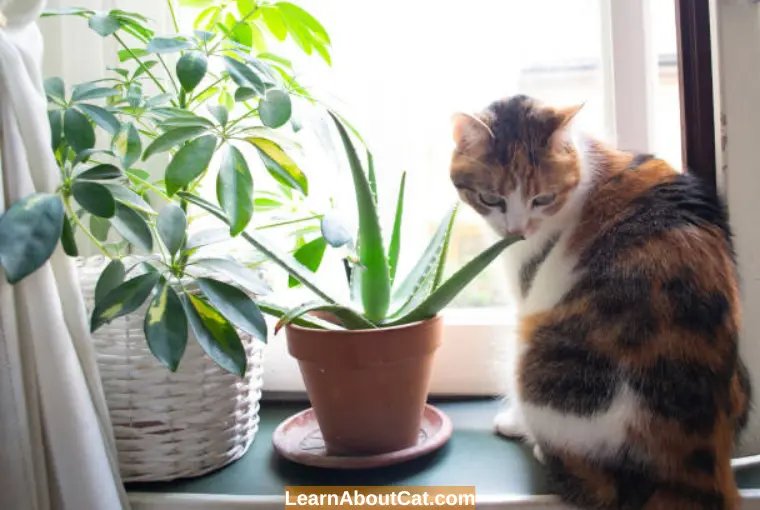
It’s important to get your cat to the vet as soon as you notice he’s suffering from aloe poisoning. A comprehensive physical examination will be performed by your veterinarian. In order to diagnose a cat’s condition, your veterinarian will take a urine sample and blood for blood testing. It is possible that the veterinarian will also perform an X-ray to make sure your cat is not suffering from organ damage.
Cats with mild intestinal diarrhoea often have 2 to 3 clear defecations without mucus or blood. Cats with recurrent diarrhoea may lose weight as a result of their body’s inability to absorb nutrition.
Which Other Plants are Poisonous to Cats?

There are other potentially lethal houseplants in our homes than aloe vera. Several of the most popular houseplants can be hazardous to cats! Before long, you start to worry about the safety of every plant in your house.
These popular houseplants are poisonous to cats, and you may learn how to keep your cats away from them and spot the symptoms of accidental poisoning in cats by reading the list of hazardous houseplants below. Call your veterinarian for advice if you ever have any concerns about poisoning your cat.
ZZ Plants
Especially among novices, they are very well-liked indoor plants. ZZ Plants require very little maintenance and may endure being abandoned. But are ZZ Plants harmful to cats? Yes! Both of these plants are skin irritants and can poison if consumed, so you must keep them away from your cat.
Lilies
Lilies are among the most deadly indoor plants for cats, and every part of the plant is poisonous. Within 36 to 72 hours of ingesting even tiny quantities, cats can experience total renal failure. Lilies are a no-no if you have a cat as a pet!
Viper plants
Similar to aloe vera, snake plants also have saponins that, if consumed by cats, can make them ill, cause diarrhoea, and cause stomach pains. Although there are only minor harmful consequences, taking large amounts can be fatal.
Ferns that Grow on Asparagus
Do ferns harm cats? Not usually; it all depends on the plant’s variety. However, asparagus ferns should be avoided since they are harmful. There are other cat-friendly ferns available as an alternative. Choose a Boston Fern or StagHorn Fern instead.
Eucalyptus
Both fresh and dried eucalyptus are toxic to your cat. Your cat may experience symptoms such as salivation, convulsions, vomiting, diarrhoea, and disorientation after ingesting this potent houseplant, among other troubling indicators. To protect your cats, substitute eucalyptus essential oil in a sealed container for fresh or dried plants.
Tomato
If you want to grow tomatoes inside and you have cats, you might want to think twice. Toxic to your cat’s delicate digestive system are tomato stems, leaves, and even unripe tomatoes. Ripe tomatoes can occasionally be a pleasant treat for your cat with your veterinarian’s consent, but the remainder of the plant can be harmful to them. Keep tomatoes out of the cat’s reach in the garden or a special greenhouse.
Christmas trees
Winter and fall home decorations frequently include Christmas trees or their branches, needles, and pine cones. Although it’s not categorised as a deadly plant, pine needles and sap provide the risk.
Christmas trees may cause a little upset in cats’ digestive systems. Keep a watch out for warning signs in your cat while they’re near your décor, such as Gagging, Choking, Salivation, Enlarged Eyes, and Running in Fear. Pine needles may also become choking dangers.
Frequently Asked Questions
The Bottom Line on Can Cats Eat Aloe Plant
Therefore, there are two options for how to respond to the question, “Is aloe vera safe for cats?” The aloe vera plant is poisonous to cats, who will experience diarrhoea and stomach pain if they nibble on the leaves and swallow the latex it produces. If a large amount of the plant is consumed, this can cause severe dehydration and can be fatal.
Aloe vera gel, on the other hand, is advantageous and safe for cats. It won’t do any harm if your cat licks its fur after you’ve administered the therapy because there are no risks associated with consuming aloe vera gel.
Related Posts:
Who is Isabella?
My name is Isabella, and I am a dedicated and knowledgeable cat enthusiast. With years of experience caring for cats and a deep love for felines, I made a mission to help other cat lovers navigate the challenges of cat ownership.

